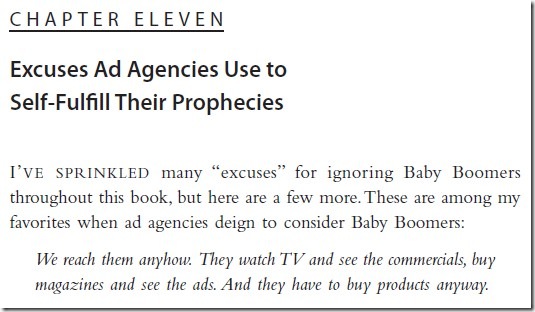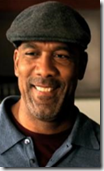 Not too long ago I pitched a television series. Hadn’t done that since 1974.
Not too long ago I pitched a television series. Hadn’t done that since 1974.
I put together a proposal, emailed it, and ended up chatting on the phone with the program director for a major cable network.
The show (obviously) targets Baby Boomers. It’s about universal design, aging in place – and not aging in place. Sort of a cross between House Hunters and all those home renovation shows.
 I didn’t get too far. Almost immediately, the gentleman said, “There is no way I could sell this to an advertising agency. They’re all twentysomethings – and have already told me, ‘Why target people over fifty? They watch your shows anyway.’”
I didn’t get too far. Almost immediately, the gentleman said, “There is no way I could sell this to an advertising agency. They’re all twentysomethings – and have already told me, ‘Why target people over fifty? They watch your shows anyway.’”
I was taken aback, but not surprised. It amused me to hear someone practically quote from my 2005 book:
Since the chat, there have been news stories every which way that pretty much describe the series I pitched:
Attractive products for aging boomers
Universal design turns toward high design (Chicago Tribune)GE's Marc Hottenroth Is Building a Home Made for Baby Boomers (Fast Company)
Remodeling Now to Avoid Accessibility Problems Later (New York Times)
Cities introducing age-friendly innovations (AARP Global Network)
Add to the above this brand-new (but nothing new) article in The Wall Street Journal – and you have the Introduction and 1st Chapter of my book:
Introduction: The Geritol Syndrome (PDF)
Chapter One: Why Companies and Ad Agencies Need Baby Boomers (PDF)







 I’ll leave you with some other studies that will confuse you even more – or not, if you believe everything as I do:
I’ll leave you with some other studies that will confuse you even more – or not, if you believe everything as I do:



 A few of these Green toy companies might get the smarts – and market their products directly to Baby Boomer grandparents.
A few of these Green toy companies might get the smarts – and market their products directly to Baby Boomer grandparents.
